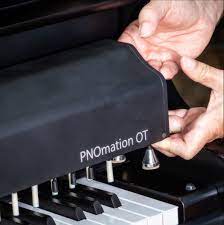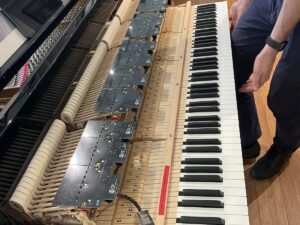QRS vs. PianoDisc vs. Spirio, a comparison of player piano systems
May 13, 2022 •Stephen Reed
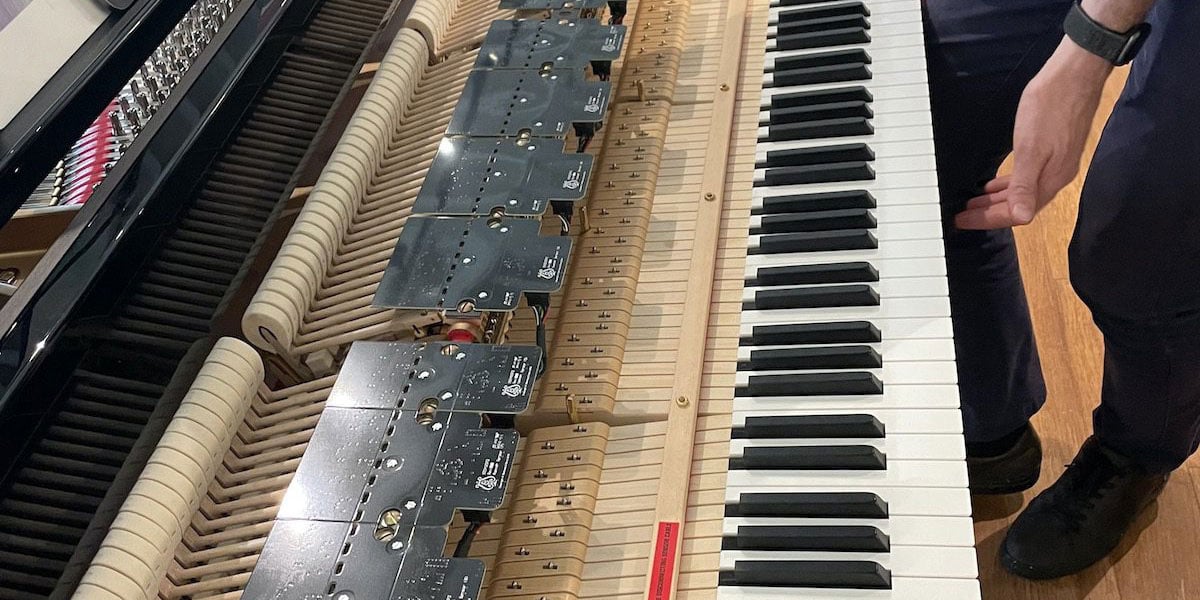
For over a century, player pianos have had the remarkable ability to play without a pianist sitting at the bench. The earliest mechanical systems used a combination of industrial era techniques, ranging from pumps to levers to pumps to cue each note from holes in paper rolls.
Fast forward several decades. A new player piano renaissance was coming into being. In the 1980s and 1990s, several companies began digitizing the player piano experience.
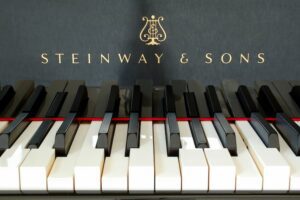 For over a century, player pianos have had the remarkable ability to play without a pianist sitting at the bench.
For over a century, player pianos have had the remarkable ability to play without a pianist sitting at the bench.The Yamaha Disklavier, the PianoDisc and QRS systems were the main players. In these systems, a series of solenoids are activated under the keys, a real revolution in player piano technology. In 2016, the Steinway Spirio entered the player market as well.
The first player pianos lacked dynamic range. Today’s player pianos have surprising nuance and exceptional dynamic range due to the new technology available.
If you are potentially interested in a player piano experience, then understanding the different modern player piano systems is key to making the best possible piano selection. After all, the addition of a player piano system is a significant investment, and the last thing you want is to choose a system that doesn’t meet your needs.
Long before acoustic piano companies began to embrace digital technologies, we at M. Steinert built our reputation on helping customers select the best piano for them.
For an increasing number of our customers, that means including a player piano system. As a result, we are constantly learning about the various playing piano options as they roll out.
By the end of this article, you’ll understand how player pianos work, what they cost, and will also be introduced to Steinway’s Spirio player piano, which now accounts for over half of Steinway’s sales today.
Modern player system add-ons: PianoDisc and QRS
QRS and PianoDisc are the main competitors in the custom installation world. While in macro similar, they each have their unique attributes, installation procedures, and technologies. The most obvious differences are in their user interface and the music library.
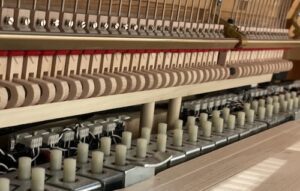 QRS uses fully encased solenoids with Teflon impregnated solenoid plungers to deliver control over the range of motion.
QRS uses fully encased solenoids with Teflon impregnated solenoid plungers to deliver control over the range of motion.Either system can be added to almost any acoustic piano not over 20 years old (this is a recommendation due to increased wear and tear, not an imposed restriction). Adding one to a piano costs between $7,000 and $11,000, depending on the models and options selected.
Adding a player system involves shipping the piano to a qualified installer to make the modifications needed to install and test the system. Player system installations should not be attempted by an inexperienced piano tech.
Here is a look at other similarities and differences between PianoDisc and QRS:
Player System technology
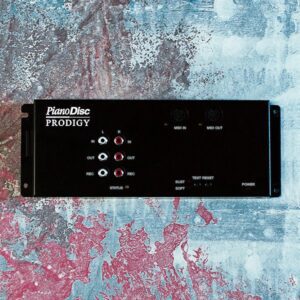 Both QRS and PianoDisc allow upgrades to both their hardware and software components. The latest PianoDisc system is called the Prodigy.
Both QRS and PianoDisc allow upgrades to both their hardware and software components. The latest PianoDisc system is called the Prodigy.QRS uses fully encased solenoids with Teflon impregnated solenoid plungers to deliver control over the range of motion. A longer plunger and solenoid deliver greater accuracy and the necessary dynamism to support this feature.
PianoDisc solenoids are shorter than those on QRS, which some feel reduces performance due to the physics of solenoid engagement.
Both QRS and PianoDisc allow upgrades to both their hardware and software components. The latest PianoDisc system is called the Prodigy and the most recent update to QRS is the PNO3 (Pianomation 3).
Capacity and Controls
QRS uses an embedded web app system, where you effectively ‘login’ to the piano, and once connected have full control of the piano from any connected device.
In the first year of QRS ownership you access to all l 15,000 songs from the QRS library - which are pre-loaded into the system. After one year you get to keep 1500 without additional payment–and you can order more through the app.
Over 4,000 songs in all music categories have been recorded for PianoDisc. You can download music from PianoDisc’s music store via iQ.
Other similarities and differences
Both the QRS PNO3 and PianoDisc iQ systems are retrofit and can be easily installed in any piano.
Both systems allow songs/tracks to have additional audio accompaniment. The balance between the piano and this additional audio can be mixed from the app controls.
With PianoDisc, music is mostly purchased as an entire album, while QRS allows users to purchase singles.
Demand for the modern player piano experience continued to grow. Yamaha rolled out their Disklavier player piano in 1987. See the article at the end of this article for details on the Disklavier and how it compares to the Steinway Spirio.
Spirio: Steinway & Sons’ Next Generation Player Piano System
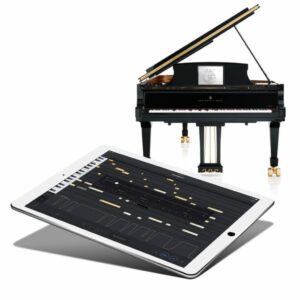 In 2016, Spirio set out to redefine the player piano experience in terms of both quality and ease of use.
In 2016, Spirio set out to redefine the player piano experience in terms of both quality and ease of use.After several years of research and engineering, Steinway introduced the Spirio High-Definition Player Piano in 2016. Spirio set out to redefine the player piano experience in terms of both quality and ease of use.
In addition to having the player piano technology installed in the factory before the sale, three additional factors help to set them apart:
- Built-in at the factory: Spirio’s player piano technology is built-in at the factory, not after the fact. A Spirio system cannot be added to an existing piano or even another Steinway.
- New Technology: Spirio incorporates a new player system capable of over 1000 degrees of sensitivity per key and 256 degrees of pedal control along with legendary Steinway quality throughout.
- Highest-definition recordings: The Spirio content library has the highest-definition content available, performed by Steinway Artists, and the entire 4,000+ song library is included with the Spirio purchase (no subscription, songs, or albums to purchase separately).
The cost to add Spirio's Playback system technology to a Steinway & Sons' Model M or Model B grand is about $27,500. To further add the Record technology is an additional $15,000.
Spirio | r
In 2019, Steinway introduced the Spirio | r, allowing the capture, archival, and editing of live performances in high-definition. Spirio | r offers exclusive high-resolution recording, preserving all the music: every nuanced dynamic level from infinitesimal gradations of hammer velocity and every shade of resonance from proportional pedaling.
The Spirio | r adds a total of $45,000 to the new Steinway Grand Model M, B, or D (the Model D Spirio is only available in the Spirio | r version).
Modern player pianos are here to stay
Continued interest in add-on player piano systems like QRS and PianoDisc, as well as brisk sales of Yamaha Disklavier and Steinway’s Spirio, are proof positive that modern player pianos are here to stay.
The fact that well over half of new Steinway sales are for Spirios confirms the increasing popularity of this intriguing combination of classic acoustic design and modern-day digital technology.
At M. Steinert, we encourage you to try all four major player piano systems before purchasing. Investigate PianoDisc, QRS, Yamaha’s Disklavier, and Steinway’s Spirio. Only then will you be able to make the most informed choice for your modern player piano.
Make an appointment to discuss these options with one of our seasoned piano consultants at M. Steinert. In the meantime, read more about the differences between Disklavier and Spirio in this article:
Spirio vs. Disklavier: Which is the better 21st century self-playing piano for you
Featured Articles
Categories
- Beginner Pianos (18)
- Boston Pianos (12)
- Comparisons (26)
- Designer and Specialty Pianos (8)
- Essex Pianos (10)
- Events (11)
- Featured (21)
- Institutional (3)
- Joy of Piano (12)
- Learning About Pianos (62)
- News (34)
- Piano Bits (6)
- Pricing and Cost (19)
- Resource Center (116)
- Roland Pianos (6)
- Spirio (13)
- Steinway Pianos (64)
- Student (14)
- Teacher (12)
- Used Pianos (20)
- Videos (13)


